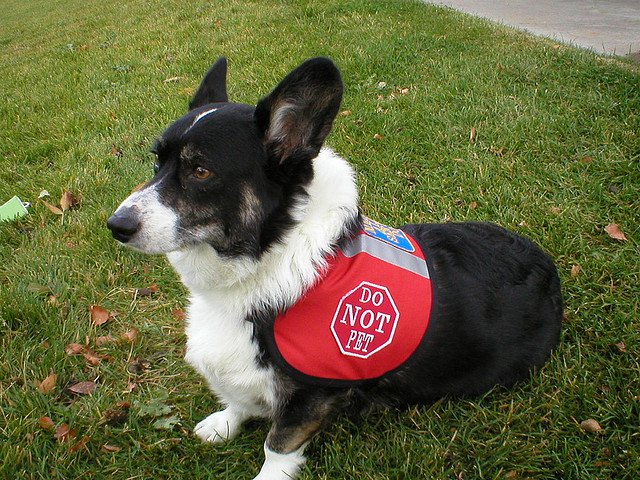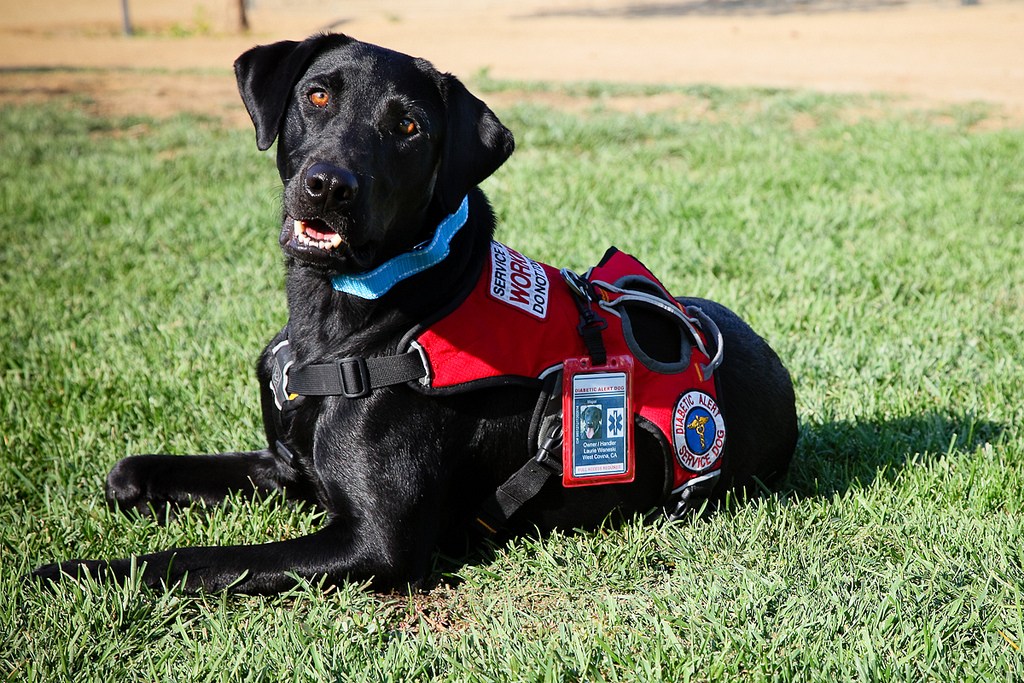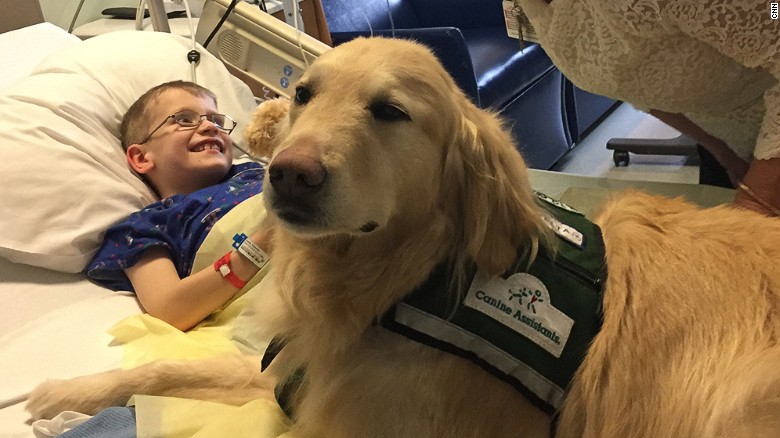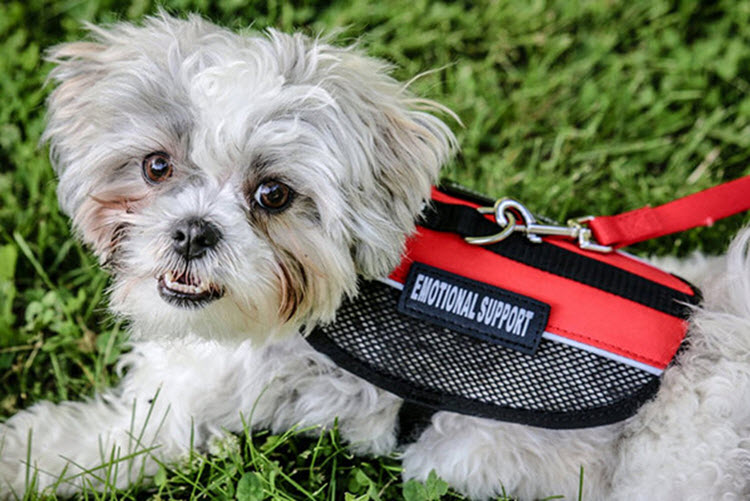Have you ever found yourself wondering, “What’s the difference between a Service Dog, Therapy Dog, and an Emotional Support Dog?”
Many of my followers have probably seen a working dog in their lifetime but may have not known exactly what their duties were. I’m here with my friends at PetFlow to help distinguish the three types of working dogs so you have a better understanding and appreciation of these incredible animals.
SERVICE DOGS
A service dog is a dog that’s been individually trained to perform tasks for a person with a disability.
Believe it or not, the only thing that makes a service dog a service dog is their training! That’s incredible, isn’t it?
In the U.S.A. there is no need for a certification, ID or other paperwork when obtaining a service dog. In order to qualify for a service dog, you must have a condition that limits you or makes you unable to complete daily life activities.

Interested in how a service dog may help benefit you?
I’d suggest that the best person to talk to regarding a service dog would definitely be your doctor. Talk with them and see if a service dog would help you in your day-to-day activities. Each individual with a disability is going to be different so a service dog will need to be custom trained to their handlers unique needs!
WHAT CAN A SERVICE DOG DO?
A great example of how a service dog can help is, if you have a mental illness your service dog can be trained to alert you when it is time to take your medicine. In this case the service dog will be trained to tug at your shirt, so you know it’s time to take your medication. Another example of a service dog is a Seizure Response Dog. This type of dog is trained to respond to their handler’s seizures. This may mean that the dog is trained to retrieve medication, utilize deep pressure stimulation to end a seizure early, and fetch a nearby person to help, or call 911.

SERVICE DOGS – PUBLIC ACCESS
Public access for service dogs can be different depending on what country you are in. In America, the American’s with Disabilities Act (ADA) states that state and local governments, businesses, and non-profit organizations that service the public generally must allow service animals to accompany people with disabilities in all areas of the facility where the public is normally allowed to go. However, this does not mean anyone is able to bring their pet with them wherever they go, and should not be abused if your pet is not a service animal.
The ADA is a civil rights law that prohibits discrimination against individuals with disabilities in all areas of public life, including jobs, schools, transportation, and all public and private places that are open to the general public. The purpose of this law is to make sure that people with disabilities have the same rights and opportunities as everyone else. I believe that service dogs allow many disabled people a sense of independence in their life again, and let’s be honest, who doesn’t want that?

I want my followers to keep a few things in mind about service animals. If you encounter a service dog in a public area, you are not allowed to request any documentation for the dog, require that the dog demonstrate their skills, or inquire about the person’s disability. In fact, in situations where it is not obvious that the dog is a service animal, staff at that business may ask only the following two questions:
(1) Is the dog a service animal required because of a disability?
&
(2) What work or task has the dog been trained to perform?
Since staff is only allowed to ask these two questions it allows the disabled pet parent a sense of privacy and independence.
THERAPY DOGS
Therapy dogs tend to go to places like hospitals, schools, and nursing homes! These working dogs give comfort to people who could benefit from experiencing some extra love.

A therapy dog has different responsibilities than a service dog or an emotional support animal.
WHAT CAN A THERAPY DOG DO?
A therapy dog’s responsibilities are to provide psychological or physiological therapy to individuals other than their handlers. In general, I find that these types of working dogs have very stable temperaments, they’re friendly and have very easy-going personalities.

Unlike service dogs, therapy dogs are encouraged to interact with a variety of people while they are on-duty. For example, a therapy dog would be encouraged to be given affection in a public situation. This differs as a service dog would not be allowed to engage in getting pets while they are on duty, as it’s very important for them to stay focused on their handler for their handler’s safety.
Another thing that sets the two types of working dogs apart is this. A therapy dog has many more limitations as to where they are permitted. Some institutions offer therapy dog access, but this may only on a case-by-case basis. Ultimately this is solely intended for the benefit of patients, guests, customers or clientele.
PUBLIC ACCESS – THERAPY DOGS
Therapy dog handlers do not have the right to be accompanied by their therapy dogs in public places where pets are not permitted. The reason for this is that therapy dogs do not have public access rights and are not covered under the Americans with Disabilities Act.
EMOTIONAL SUPPORT DOGS
I’m sure many of you have heard of an Emotional Support Dog. Emotional support dogs provide comfort and support in forms of affection and companionship. These types of working dogs are found to be extremely comforting to individuals suffering from various emotional and mental conditions.
WHAT CAN AN EMOTIONAL SUPPORT DOG DO?
I find this interesting because unlike other service animals, an emotional support dog is not required to perform any specific tasks. Any dog can be an emotional support dog. They don’t require any specific training. Any dog can be an emotional support dog. They don’t require any specific training, but you do have to get a prescription letter from a medical doctor or licensed mental health professional.

PUBLIC ACCESS – EMOTIONAL SUPPORT DOGS
The Fair Housing Amendments Act (FHAA) and the Air Carrier Access Act (ACAA) states that an individual who meets the proper criteria is entitled to an emotional support dog. The FHAA protects individuals by allowing their emotional support dog to live with them. This stands true regardless of if they live on a no-pet property. The Air Carrier Access Act (ACAA) also protects individuals. They even allow emotional support dogs to fly with their pet parent in the cabin of the airplane.

After researching, I’ve found at least one study that shows people who have service pets have an improved social life. As a dog trainer and a pet parent myself, this is very comforting to hear!
If you’re interested in learning more about dog training, check out my YouTube channel for more videos!

I am 100%disabled from where my back was broken in 5 places. I worked for years with kids in the public school system. I bred and trained my dog and he’s a wonderful help. I can’t sit, stand or sit for more than 30 minutes. I would like to know if I can register Bear as my service dog
Hey Carol! I’m sure you could! It’s best to contact your doctor for more information on how to go about getting Bear set up as your service dog.